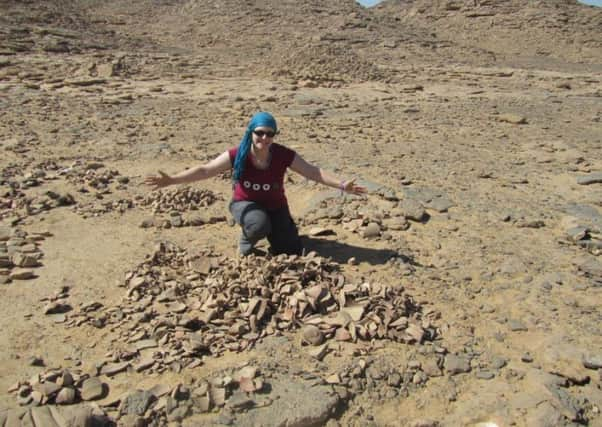Jordanstown archaeologist helps find first new Egyptian temple in 200 years


Archaeo-ceramicist Dr Sarah Doherty was part of a team from Lundt university led by Dr Marian Nilson who uncovered the 3,300 year old Temple of Kenu.
The temple, uncovered at the Gebel el Silsila sandstone quarry site north of Aswan, dates back to 1500BC and the reigh of empire-building Pharaoh Thutmose II, father of female Pharaoh Hatshepsut.
Advertisement
Hide AdAdvertisement
Hide AdThe sandstone from the quarry was used to construct famous temples including Karnak, Luxor, the Ramesseum, Kom Omba and Ramses III’s Medinet Habu.


Sarah, who works as a freelance lecturer in Egyptology at the Egypt Exploration Society, says the discovery represents a major find which will advance the field of egyptology.
She explained: “It was unbelieveable to see these beautiful high-quality hieroglyphics that hadn’t been seen for 3000 years.
“We found 300 decorated limestone fragments, some of which bore the Pharaoh’s face, as well as hieroglyphics, jewellery, faience beads, amphorae and bowls.
Advertisement
Hide AdAdvertisement
Hide Ad“We found a fragment of roof with yellow, gold and blue so we believe that there may have been a starry ceiling. We also found cartouches of two Pharaohs, Amenhotep III and Ramesses II.


“Amenhotep III was the father of the heretic Pharaoh Akhenaten, who was married to Nefertiti.”
Sarah says that the temple discovery confirms the importance of the Gebel el Silsila site to ancient Pharaohs. Due to the high quality sandstone, skilled stonemasons, quarry workers and peasants laboured to transport the rock for construction throughout Egypt.
The dig team is now hoping to develop the site as a tourist attraction by founding a museum.
Advertisement
Hide AdAdvertisement
Hide AdSarah continued: “The items we discovered are in the museum at Kom Omba temple, but we are hoping to start a museum here so that it will become a stop on the tourist trail.
“The temple discovery shows that there is so much more to be uncovered in Egypt. Every time we step onto the site we find something new.”